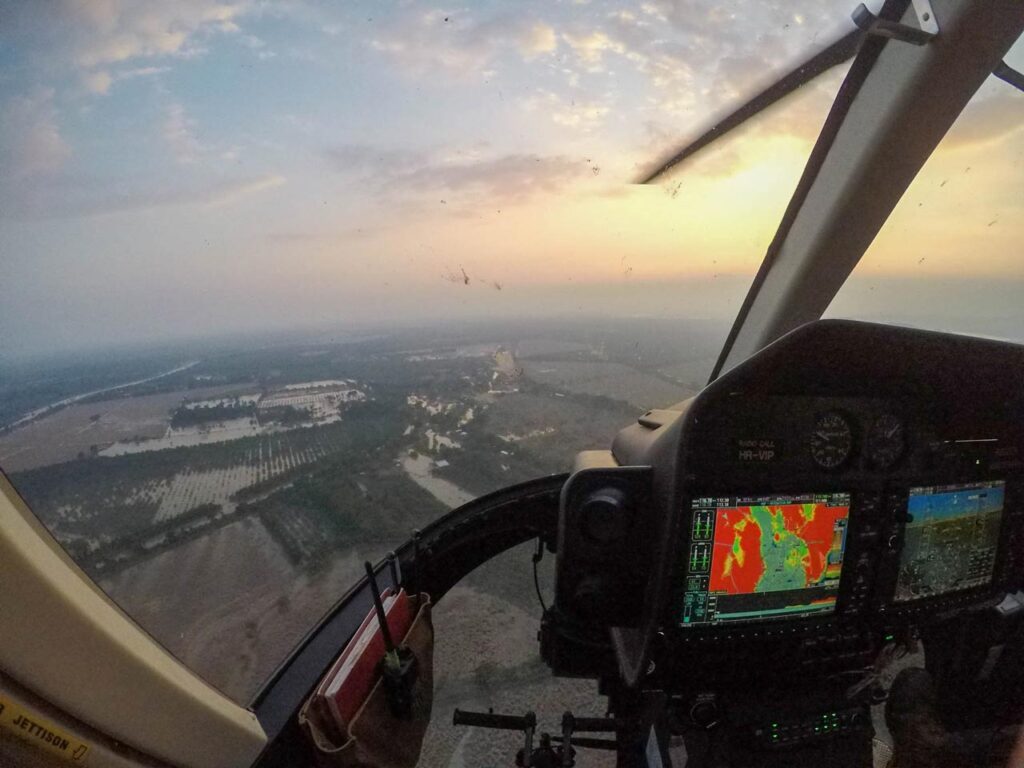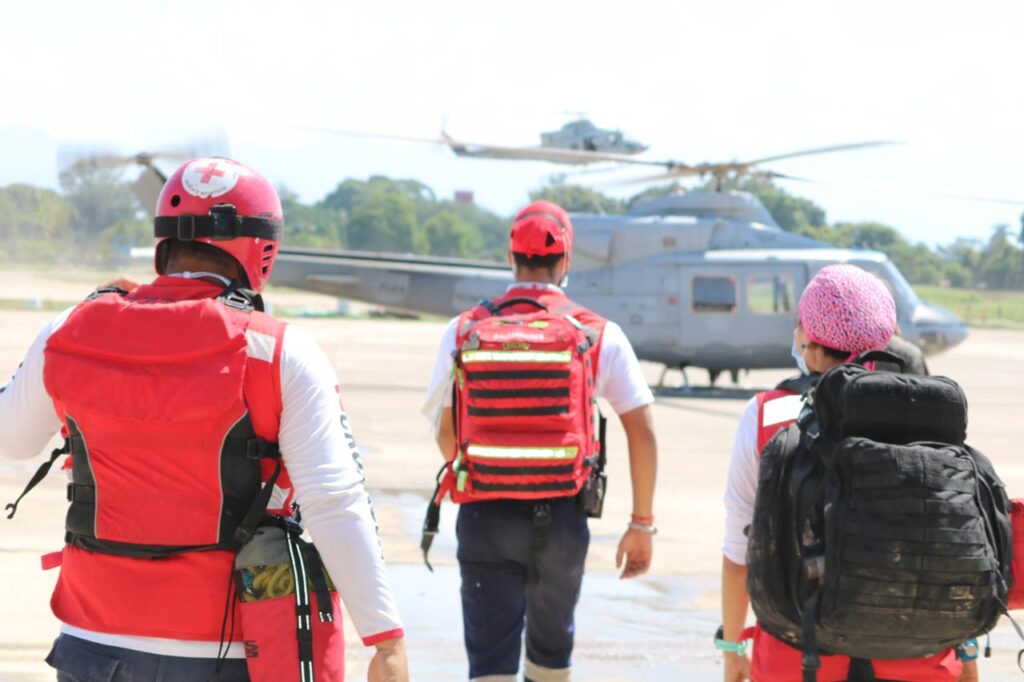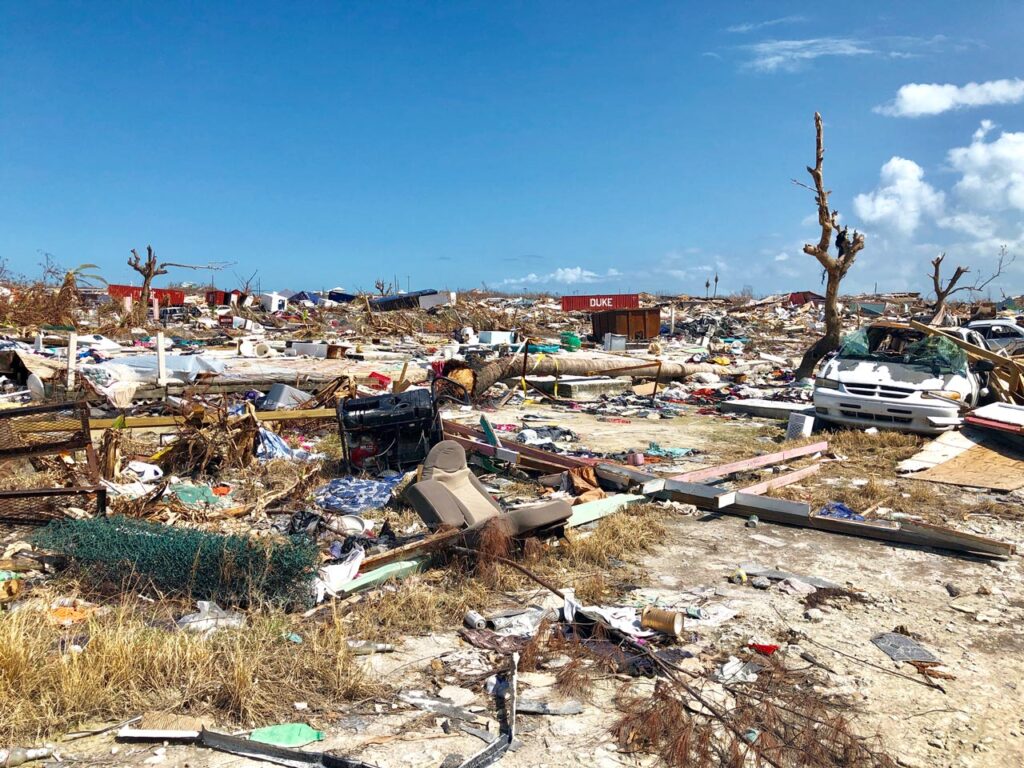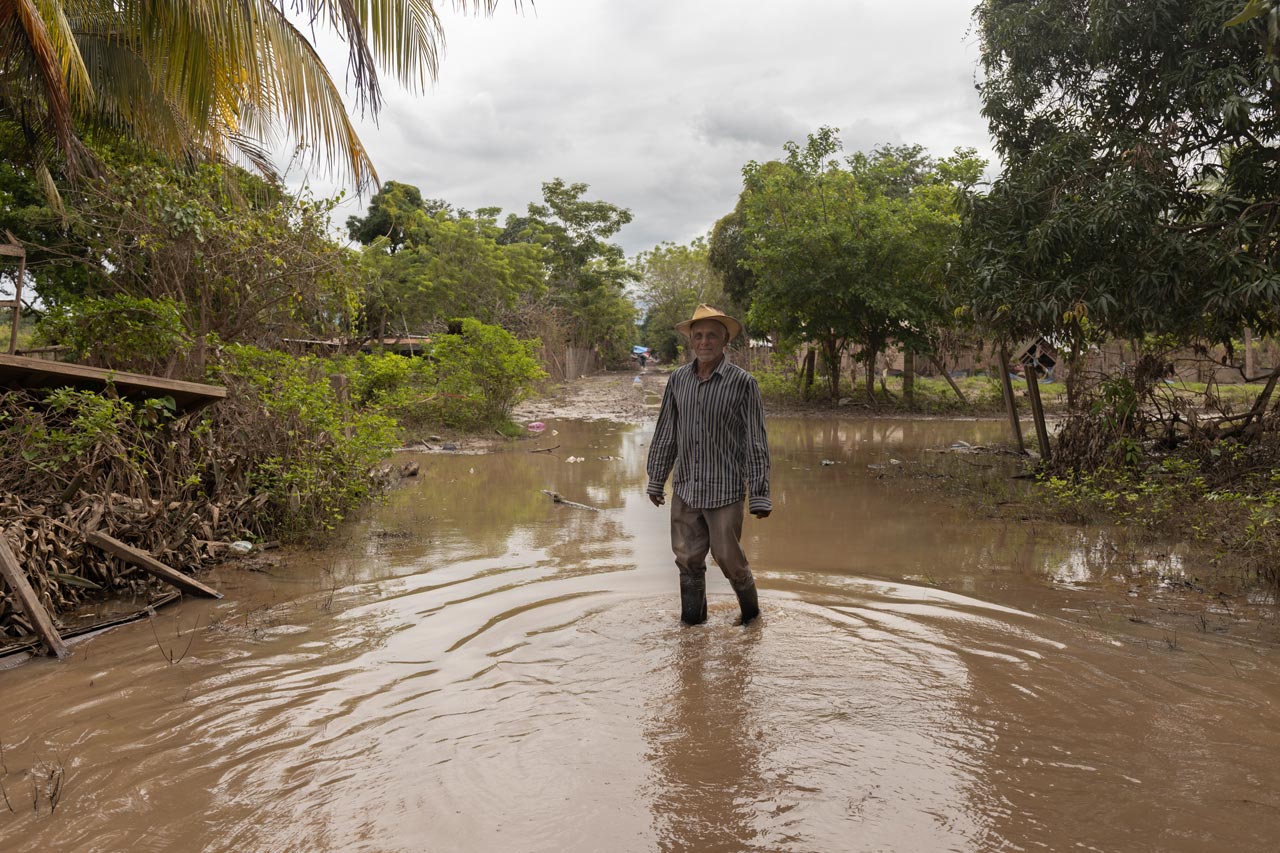Summaries
Every year, the IFRC Americas Regional Office hosts the Pre-Hurricane Season Conference to ensure communities and Red Cross teams are better prepared to cope with the effects of heavy rains, landslides, and floods that weather events may cause. The 2022 edition was launched on June 7th, and here are some of the highlights of the opening journey, that challenges us to transform forecasts into early action, use data to build resilience, foster investment in local first responders, and ramp up the leadership of women in humanitarian operations.
The purpose of the 2022 Pre-Hurricane Conference
This IFRC event will focus on three crucial elements to provide solid and substantial support to at-risk communities: localization, anticipation, and better coordination when preparing and responding to hurricanes that may affect communities already grappling with poverty, violence, and the COVID-19 pandemic. Additional challenges include the presence of mixed migratory flows, the negative effects of climate change, and the impact of the current global food crisis.
The conference will address the contribution of local first responders such as Red Cross staff and volunteers. Their presence within communities before, during, and after crises means they are generally best placed to link immediate response efforts to longer-term resilience-building, preparedness, and recovery.
CDEMA AND CEPREDENAC: Localization and coordination are vital to saving lives
The Deputy Executive Director of the Caribbean Disaster Emergency Management (CDEMA), Andria Grosvenor, reminded us that preparedness actions are essential to saving lives. CDEMA has conducted logistics and relief workshops, trained personnel in Emergency Response Deployment, and launched its Disaster Fighters campaign in the Caribbean which has already reached over 16 million people and will be extended this year to Latin America. CDEMA and IFRC will work hand in hand to continue fostering comprehensive disaster management capacities and sustained community resilience.
Claudia Herrera, Executive Secretary of the Coordination Center for Disaster Prevention in Central America and the Dominican Republic, stressed the importance of preparation, coordination, and knowledge to prevent the loss of lives and livelihoods. The Climate Forum, early warning tools, and other actions aimed at risk management are actions carried out to support the countries of the region. Community resiliency efforts – like those by the Red Cross Anticipation Hub – are crucial to highlighting the importance of preparing for disasters.
Gender Equity in Disaster Response: The more diversity, the greater the quality of operations
The IFRC, Spanish Agency of Cooperation for Development (AECID), the Canadian Red Cross, and other partners have developed a strategy to foster greater inclusion of women in leadership positions in Red Cross humanitarian response in the Americas. After two years of collaboration, dozens of women have participated in training and mentoring programs, contributed to the co-creation of a training and skills program and been at the forefront of humanitarian response operations as complex as hurricanes Eta and Iota, population movements in Darién, and the Haiti earthquake, where 70% of the response staff were women.
Three of the participants in the program shared their views and feelings about leading humanitarian operations. A lack of confidence in themselves despite their high qualifications, a distorted self-perception of one’s own capacities, and the heavy weight of patriarchal cultures are some of the main challenges they have had to overcome. “Women must express more openly their ambitions and successes,” they said.
NOAA’s 2022 Forecast: Flooding may cause the majority of the fatalities
Dr Richard Brennan, Branch Chief of the Hurricane Specialist Unit, from the National Oceanic and Atmospheric Administration (NOAA), shared that the storms behavior for the Atlantic basin peaks every year between August and October, affecting especially the regions of the English and Spanish Caribbean, Central and North America. In 2022, it is expected to have a 65% chance of above-normal season including three to six hurricanes of category three or higher. In the US, tropical cyclone direct hazards include freshwater flooding with 65% of the fatalities.
Useful resources to check forecast on the formation of potential tropical cyclones, and promote preparedness are available in Spanish and English. Some of them include key messages, forecast confidence and highlights; and the Graphical Tropical Weather Outlooks forecasts, which provide details on speed of winds, time of arrival, and risk analysis maps. Dr. Brennan explained that there is still no evidence to support that hurricanes intensify faster now than in previous years.
Anticipation in emergencies: The power of early action
Weather events are cyclical and becoming more frequent and intense. In many cases, we can predict them, therefore it is key to broaden the concept of humanitarian operations from emergency response to anticipatory action. What does it take to design a Plan for Early Action? According to Guatemalan Red Cross general steps include identifying main actors and their roles, monitoring forecasts, coordinating with local authorities, engaging communities, developing risk analysis and activation mechanisms, and keeping in mind realistic time frames.
Costa Rican Red Cross focused on the value of cash transfers as an anticipatory measure, useful for rent payment and transportation for early evacuation. This solution starts by carrying out community census, and early activation systems within the NS. The Nicaraguan Red Cross shared local experiences using anticipatory approaches to address different scenarios, from social unrest to droughts and hurricanes. All cases have one thing in common: the secret to success is putting communities at the center of our work.
Emergency preparedness solutions in the English and Dutch-Speaking Caribbean
In Antigua and Barbuda, the Red Cross is constructing a new container warehouse in Barbuda with the support of the French Red Cross – the island’s first storage facility, which doubles as a meeting space. In Belize, the Red Cross is developing community disaster response teams, and in Cayman Islands, continues to strengthen community emergency response teams, that now have over 300 members. These teams allow for more effective preparedness and response in communities before, during and after disasters hit.
IFRC’s preparedness actions include prepositioning of stocks, logistics capacity assessments and logistics/ warehouse management training, sensitizations on Emergency Appeals and Disaster Response Emergency Funds (DREFs), crisis communications training and dissemination of preparedness messages. The IFRC has also provided Red Cross societies with technical and financial support, training on Performance for Effective Response, and skills for improving community early warning systems and needs assessment. The French Red Cross’ Platform for Regional Intervention for the Americas and the Caribbean (PIRAC) highlighted its roles in disaster management and its experience in past emergency responses.
Preparedness and Risk Assessment by Pacific Disaster Center
The IFRC and the Pacific Disaster Center (PDC) have worked together for 25 years to anticipate disasters, decrease their impact as much as possible, prevent suffering and the losses, and ensure timely disaster risk reduction (DRR) and humanitarian response data to advance the Sustainable Development Goals. In a nutshell: we make communities safer and information meaningful by delivering the best data, at the right time for the right people.
PDC bridges the scientific community with those who need to make decisions on how we can avoid hazards or better prepare for crises. They provide access to a suite of tools to support planning for and responding to disasters worldwide. One of them is the National Disaster Preparedness Baseline Assessment (NDPBA), which favors disaster monitoring and promotes risk-informed decision making, among other advantages. They have also designed applications that allow us to analyze multi-hazard exposure and address multi-hazard. Those customizable apps include Disaster Alert, Disaster Aware, and Tropical Cyclones Daily Reports, which even translate wind speeds in anticipated impact in potentially affected areas.



Collaboration between Red Cross Societies and governments in emergency situations
During the last five years, after responding to hurricanes like Irma and Maria, lessons have been learned on the importance of anticipation, preparedness, and local action. This session has highlighted the importance of working collaboratively with governments and organizations in the region to respond to and support affected communities. Supporting tools like IFRC’s Disaster Relief Emergency Fund and Emergency Appeals is crucial, as well as strategic alliances to invest in preparedness on the ground.
Governments like the French, Spanish and British have pre-positioned stock to respond to the emergencies that affect the Caribbean, the Overseas Territories, and countries in the region. The response in Ukraine, the COVID19 crisis, and the socio-economic effects of the pandemic can influence the response during the Hurricane season. In terms of necessities, it is especially important to work hand in hand with communities, so Community Engagement in emergencies is critical before, during, and after an emergency.
Partnerships with corporations in humanitarian responses
Alliances between the humanitarian and the private sector can highly promote collaboration, empowerment, and innovation, to develop capabilities, to reduce the effects of disasters and provide efficient response during emergencies. In this session three companies (Amazon Web Services, UPS, and Zurich) presented valuable examples of how their expertise has supported collaboration, funding, and innovation: from reconnecting broken emergency call centers and evaluating the risk on flooding using machine learning, to delivering vaccines during the COVID-19 pandemic.
This session highlighted the importance of putting focus on solving specific issues; to make the most of the expertise and knowledge from the company; to give more visibility on the opportunities that the IFRC and Red Cross-National Societies have so companies can learn how to collaborate; and to consider the curve of learning on new alliances to better optimize efforts from newly created partnerships.
Red Cross auxiliary role in relation to laws and politics
To ensure coordinated action between the institutional response as well as from the humanitarian actors it is key to count with political and legal frames that ease preparedness and response to disasters and emergencies, placing the human being at the center of the interventions. As examples of this coordination, two organizations, CEPREDENAC presented the Regional Mechanism of Humanitarian Assistance to build efficient protocols to strengthen the preparedness and response of official institutions as well as the humanitarian actors in Central America. In the English Caribbean, CEDEMA and IFRC, developed a policy draft that was presented to the national authorities of Trinidad and Tobago which is to become soon a National Plan of Action.
The humanitarian hub of the Argentinian Red Cross and IFRC was presented as a case of success of interinstitutional coordination between the Red Cross, the IFRC and national Government. This effort will allow for delivering immediate humanitarian aid to up to 10,000 people affected by disasters in the Southern Cone.
Media in emergencies: Finding new angles
This session was a space for reflection on the relationship between the media and humanitarian organizations during the hurricane season. Journalists Giovanna Ferullo, EFE; Alba Santana, France24; and Claudia Hernandez, Radio Universidad from Guatemala; stressed the need for superior quality data, information, and testimonials, visits to the affected areas, and press releases that provide analysis of the crisis rather than purely descriptive or institutional information. They are also interested in human stories and the medium- and long-term impact of hurricanes in communities.
On engaging angles to cover the hurricane season, they highlighted the growing weight of climate change as a factor that increases risks and vulnerabilities. Participants highlighted the importance of data but also the value of emotions: after news on the impact of hurricanes, the second subject about which they published articles is how communities are feeling and coping with the effects of the disasters. Covering the impact on the economy or over specific groups such as migrants, will depend on the specific contexts where disasters take place. EFE Agency and TV stations are in official statements and getting to the hard-hit areas where the stories take place. For radio journalists, imagination and description play a key role when it comes to telling stories and transmitting the experiences of the people affected.
Preparedness and response in health emergencies
Hurricanes are one of the clearest examples of disasters that risk both physical and mental health, therefore having emergency teams and capacities prepared to provide primary and later care is crucial. To expose this the Red Cross of Bahamas, Colombia, Guatemala, and Saint Vincent & the Grenadines presented their experiences responding to emergencies and highlighted the importance of integrality of actions including in the health response: Protection, Gender and Inclusion, livelihoods, and mental health and psychosocial support must be part of the humanitarian responses.
Participants addressed the importance to assure multi-level coordination from a family, community, and institutional level as well as the importance of holistic responses Following and adapt to the national legal frames on Health and Hygiene in emergencies and implementing comprehensive (and sustainable) trainings in preparedness and response to health needs is also essential. Regarding infectious diseases, we should go beyond medical assistance and prioritize disease control and risk communication to communities. Finally, participants stressed the need to collaborate with governments to address the long-term needs disasters might cause.
Volunteering in emergencies: caring for the care workers
Self-care and mental health are crucial for everyone, and Red Cross volunteers are not the exception. They are usually the first responders, the ones taking care of communities in times of peace and times of crisis. Having robust volunteer management systems in National Societies is vital to meet our duty of care and guarantee that those highly exposed to suffering burnout or exhaustion due to empathy have access to training, professional support, and self-care practices that promote their well-being and make them stay in the Red Cross Red Crescent Movement in the long term.
Many times, Red Cross volunteers are people from the community. Taking care of these caregivers is especially important as they might be affected by the same crisis to which they are responding. Quoting the volunteers who participated in this session: volunteers are people first, heroes last. We should not put them in a crystal box: they must feel safe and supported, sleep, eat, and have space to take care of themselves to later take care of others.
DREF: A global tool for local action
The Disaster Response for Emergency Fund (DREF) has helped more than 200 million people since 1985 globally, by supporting National Societies with funds, logistics, preparation, and personnel support for small- and medium-scale emergencies. In Latin America and the Caribbean 43 DREF operations have been activated in the last 3 years, reaching 254.000 people with a share of 47% in social crises (migration, social unrest, penitentiary assistance) 35% in floods, and 18% in other emergencies such as earthquakes, eruptions, and fires). Experiences from the Red Cross in Panama, Brazil, and Ecuador were shared in the panel.
Representatives from the European Union and the Government of Canada highlighted the capacity of this mechanism as an expedited tool to provide rapid response in emergency operations, and the value it has for accomplishing their organization’s mandate. Other elements addressed include the importance of building trust by assuring independence and transparency of the Red Cross Societies and the need for accompanying operations with communication products that can show the impact of the operations funded through this mechanism. By 2025 IFRC aims to provide 100 million CHF on support, strengthening anticipatory actions, cash-related operations, and the protection, gender, and inclusion approach.
Building trust: Minimum CEA actions in emergencies
During an emergency, communities know best what they need to recover, and it is important that they are part of the response. However, in a recent survey done among communities and humanitarian organizations, a significant percentage of people responded that their needs were not necessarily covered with the help that humanitarians bring, emphasizing the importance of listening to the communities to understand their needs and create trust among partners and the population we serve.
Representatives from the Red Cross in Guatemala and Trinidad and Tobago shared their experiences on putting CEA at the center of the response. In Guatemala, CEA was essential to respond to the Eta and Iota storms amid the COVID-19 pandemic. In Trinidad and Tobago, highlighted the importance of tools like perception surveys to understand the perception of community attitudes towards vaccination, prevention measures, and more. The new IFRC’s Community Engagement and Accountability guide includes the 10 minimum actions of CEA in emergency responses. Training volunteers and staff is the next step to guarantee that CEA is at the heart of our humanitarian response.
Volcanic eruption in Saint Vincent and the Grenadines: Decentralized response
The St. Vincent and the Grenadines Red Cross team shared highlights of their response to the La Soufriere volcanic eruption in 2021. Key highlights of the operation included distribution of cash, non-food items, hygiene and cleaning kits, as well as rental support and livelihood recovery to those affected by the eruption. Community Disaster Response Teams (CDRTs) were integral in the response, providing support with evacuations, restoring family links, and data and information management. Support from the IFRC network also made a difference in the operation.
Some key lessons learned from the operations include greater integration of psychosocial support during the operation – including for responders, ensuring that displaced volunteers are documented for tracking and assistance, and establishing cash voucher procedures and processes with government and relevant agencies. In the discussion, the importance of caring for the caregivers, ensuring coordination among key stakeholders to prevent duplication, and utilizing available tools such as anticipatory DREFs to help prepare for emergencies like these, were outlined.
Assistance services and protection to migrants: Approach based on routes
Population movements continue to be active: 25-30% of the global international migration comes from the Americas region, with a considerable number of reasons for displacement and is multicausal: violence, weaknesses in countries of origin, persecution, disasters, and climate change are reasons for migrating. In 2021, people internally displaced in America reached 1.7 million, where more than half of those people have been displaced due to storms and floods.
This session zoomed in the migratory context in Venezuela and Chile, the Red Cross actions in these countries, and the importance of Humanitarian Service Points (HSP) to support migrants and host communities in both countries. In Venezuela, the Red Cross is working with Wayuu populations and people on the move in other border states, offering services through the HSPs. In Chile, provide migrants with aid in areas where climate conditions are extreme, such as the Atacama Desert. The services for host communities and people on the move include first aid, medical care, information, and psychosocial support. HSPs can be fixed, or mobile have been changing over the years, according to the needs of people and the capabilities of the Red Cross Societies.
Search and Rescue: Stories from the field
When we talk about search and rescue, we are talking about saving lives. It is a vital component of the Red Cross humanitarian mandate, fulfilling its role as auxiliary to public powers. Red Cross teams from Colombia, El Salvador, Honduras, and Mexico explained the pathway to become a rescuer, their ways of working, the coordination mechanisms within search and rescue response, and the necessary elements to respond effectively to emergencies.
In El Salvador, rescue teams are activated in cases of car accidents or emergencies such as floods and landslides. In Honduras, cooperation between humanitarian and government is essential save lives. How to become a rescuer? It depends on the Red Cross in your country, but for example, in Colombia, volunteers over 18 years are trained in specific Red Cross methodologies and should pass physical and occupational tests. In Mexico, the training for search and rescue has evolved and is more specialized every day. But the most important intake in all cases is: the best rescue is the one that is not done because it is prevented – anticipation and preparation, not only search and rescue actions, are key to saving lives.
Community resilience measurement
Why is measuring community resilience important? The resilience of communities needs to be measured both to guide future planning and interventions and to demonstrate the impact of initiatives aimed at increasing resilience to multiple threats. In this session, we explored the measurement tools developed by the Zurich Foundation and the Red Cross.
The Mexican Red Cross shared their experience with the floods in Tabasco in 2020, where measuring community resilience helped them to understand vulnerabilities and to identify opportunities which could be explored in building resilience. Colombia Red Cross shared their experience identifying limited capacity for the communities affected by Hurricane Iota to recover quickly. The St. Kitts and Nevis Red Cross shared their learnings on recent training process that helped them to better understand the vulnerabilities and capacities of the communities with which they worked and how they could help build resilience.

